“`html
Introduction to Sedum: Meeting the Hardy Succulent
Embark on a green-fingered journey as we introduce you to the resilient world of Sedum, a diverse group of succulents that have established their roots firmly in the hearts of home gardeners and landscapers alike. With their compelling allure and fuss-free nature, Sedum species have staked their claim as a garden favorite around the globe. Let’s delve into what makes these hardy succulents a staple in our jardins de vie.
As your hands cradle the fleshy leaves, each holding droplets of life like miniature reservoirs, it’s clear to see why Sedum is synonymous with sturdiness and dependability. These succulents are renowned for their ability to thrive in conditions that would make other plants wither. Imagine implementing a fragrant sprawl of Sedum ‘Autumn Joy’ along your driveway, beckoning a warm welcome to guests with its robust hues and unwavering spirit. It’s not just a plant; it’s a testament to endurance and beauty combined.
Quietly asserting its presence in the garden, Sedum brings a bevy of benefits that extends beyond aesthetics. Picture this: a stark rock garden, reborn as a tapestry of color as resilient Sedum varieties nestle in the nooks, their roots weaving strength into the stony terrain. This hardy succulent not only adds a visual charm but also comes to the rescue of eroding slopes, their root systems acting as nature’s very own soil-stitching fabric.
With versatility at its core, the Sedum genus spans carpeting groundcovers that hug the earth to upright forms that stand tall like botanical sentinels. Each species, with its unique silhouette, conspiring with the elements, against the odds, to renew the space it occupies. Now, if you’re curious about how to bring this quiet revolution to your space, take a glimpse into the world of Sedum care with a video that showcases rapid growth techniques and handy propagation tips.
From the rocky outcrops of mountainsides to the serene simplicity of a suburban planter, Sedum is a botanical chameleon, adapting and thriving where other flora may falter. By inviting this hardy succulent into our lives, we do more than enhance our homes — we echo nature’s resilient heartbeat. So when does sedum start to grow? As the spring sun whispers across the slumbering earth, watch as your Sedum leaps into life, ready to embolden your garden with its undemanding charm and an undeniable zest for life.
“`
Understanding Sedum’s Dormancy and Active Growth Phases
As the seasons wheel by, Sedum plants embark on an inspiring journey through growth and stillness. These hardy succulents, part of a group known colloquially as “stonecrop,” have adapted to thrive in a variety of conditions. But exactly when does Sedum start to grow, shrugging off its winter dormancy to burst into life with vibrant foliage and starry flowers? Let’s dig into the natural ebb and flow of these garden favorites.
Dormancy: Picture the scene—a garden blanketed in snow, the earth firm with frost. The Sedum plants lie in wait, conserving their energy. It’s winter, and they’ve entered a dormant phase. This isn’t a time for growth; it’s a survival strategy, allowing Sedum to conserve resources during the cold months. While they might appear listless, rest assured they’re simply biding their time until the first signs of spring.
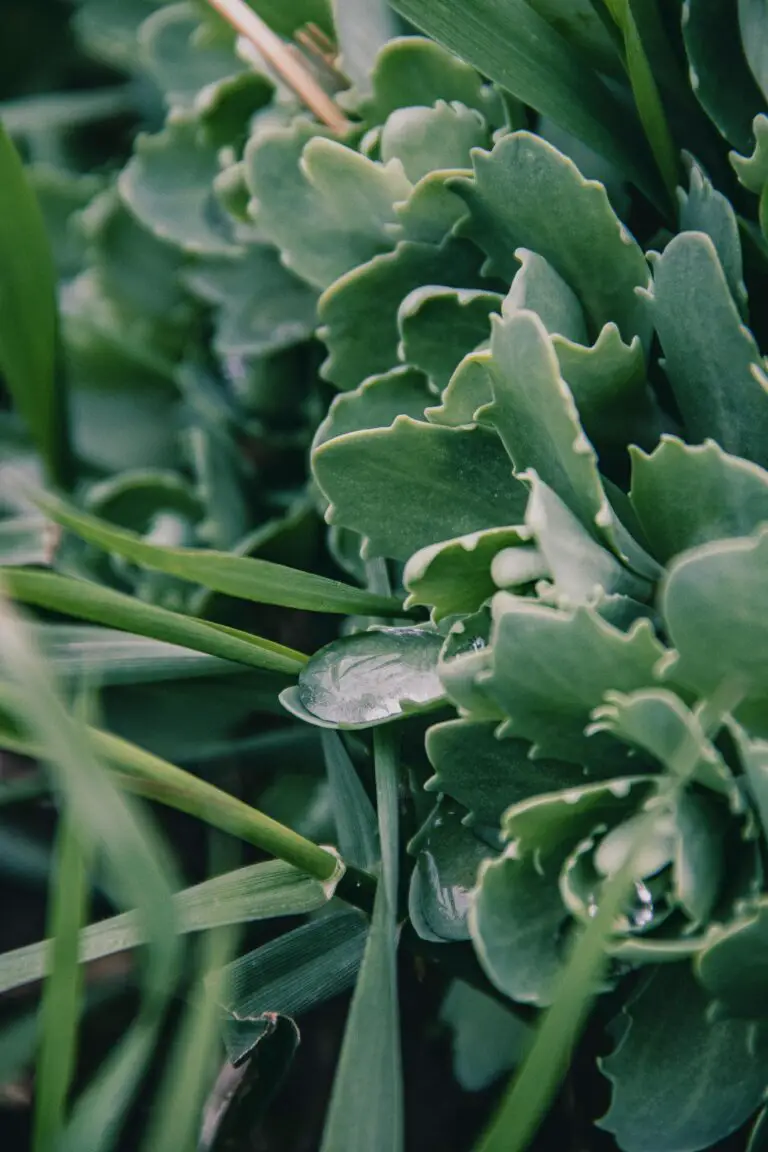
Active Growth: As winter wanes and daylight lengthens, our Sedum friends sense the shift. Come spring, a transformation occurs. Tiny buds form, unfurling leaves that reach for the sun’s nurturing rays. This marks the onset of the active growth phase—a dynamic time when Sedum is no longer just surviving, but thriving. The warmth of spring and summer coaxes them to stretch skyward, colored in vibrant greens and crowned eventually with blossoms that are a magnet for pollinators.
True to their nature, Sedum plants don’t demand much. They’re drought-tolerant, sun-loving, and often promote a lively ballet of bees and butterflies. For those eager to unlock the secrets of their effortless care, tips at Plantly will guide you to nurture them right from their spring awakening throughout the flourishing months.
Now, as autumn approaches and the days grow short once again, Sedum plants prepare to wind down. Some species add a fiery flair to the fall, with leaves and stems aflame in rich hues, signaling their impending retreat back into dormancy—a cycle that will renew with the promise of next spring. This rhythm, attuned to the seasons, ensures Sedum remains a hardy and resilient presence in the landscape, year after year.
Embracing the Seasonal Rhythms
Understanding the seasonal patterns of Sedum means we can better appreciate the lulls and crescendos of garden life. When next you spy a Sedum, whether it’s napping quietly beneath the snow or stretching joyously towards the summer sky, you’ll know it’s simply playing its part in the beautiful symphony of nature’s cycles—showcasing the resilience and versatility that make these plants beloved by gardeners worldwide.
Spring Awakening: When Sedum Starts to Stir
As the frosty fingers of winter begin to relent, garden enthusiasts eagerly watch for the vibrant return of Sedum, the hardy succulents known for their drought-tolerance and colorful displays. But when exactly does Sedum shake off its slumber? The signs are subtle yet definitive. With the thawing of the soil and the gentle warming of the days, these robust succulents commence their annual resurgence.
Early spring is a pivotal time for Sedum. The first sign of life is often found in the seemingly dormant tufts, where tiny green buds begin to swell at the base of last year’s stalks. It’s a whisper of the verdant spectacle to come. Keep an eye out for fresh shoots emerging from the soil, a testament to the plant’s determination to grow. These infant spears of green are the heralds of new growth, and for the keen observer, they provide the first hint that the Sedum’s growth cycle has begun anew.
Quick to capitalize on the increasing sunlight, Sedum’s foliage unfurls rapidly. In what feels like an overnight transformation, the garden wakes up to a scene of Sedum saplings standing proudly, their leaves soaking in every drop of sunshine. This is the period when these succulents are brimming with energy, setting the stage for the lush, cushiony mats they will soon become. And if one wishes to witness this growth in a more visual format, here’s a video that offers a glimpse into the vibrant life cycle of these remarkable plants:
Identifying the early growth phase of Sedum is not just a matter for the plant enthusiast’s diary – it’s also an excellent opportunity to give these succulents a head start on the season. By removing any debris and old growth from the previous year, air and light can better reach the young shoots, encouraging stronger, healthier growth. For those looking to delve deeper into cultivating success, our guide on succulent care is an indispensable resource, offering insights and tips that will ensure your Sedum thrives.
Witnessing the awakening of Sedum is a ritual that marks the transition from the sleep of winter to the vibrancy of spring. Their resilience and growth are a reminder of nature’s rhythms, and for the gardener, it’s the beginning of a season filled with growth, challenges, and the joy of tending to these exceptional plants.
The Impact of Climate on Sedum’s Growth Initiation
As we unpack the yearly awakening of sedum, it’s evident that climate sways this succulent’s dance with growth. But what does that mean for gardeners from coast to coast and beyond? Let’s delve into the regional rhythms of sedum and what you could expect when your green companion starts to spread its leaves.
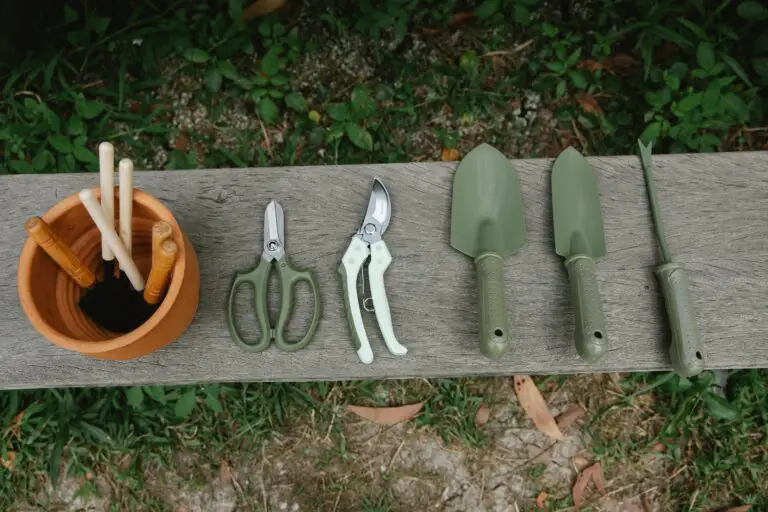
In the sunny embrace of the Mediterranean climes, sedum leaps into life as early as the last kiss of winter. With mild temperatures and sporadic rains, the sedum in these areas begins its growth cycle with a gentle nudge, not a push. For those in warmer, dryer areas, the sedum’s signal to start might be a tad more subtle, with less pronounced seasonal shifts prompting its green surge.
Conversely, gardeners facing the broad shoulders of the northern climates have a different tale to tell. With the sedum’s growth tightly wound to the thawing of soils, the longer winters mean a delayed debut. Yet, once the frost retreats and the soil warms up, these hardy succulents can sprint from slumber into full-leafed splendor, making up for lost time.
Navigating the transition zones, where temperate forests yield to grassy plains, presents a sedum scenario all its own. Patchwork patterns of warm and cold spells can lead to a start-stop growth sequence as sedum tests the waters before fully committing to grow. This hedging growth maneuver might need a gardener’s watchful eye for opportune moments of care and encouragement.
With this global garden stage set for sedum, one can see that its growth initiation is finely attuned to the climate’s cadence. Gardeners weave this knowledge into their green-thumbed practices, ensuring their sedum thrives. For more insights on nurturing these versatile plants, take a look at some sage advice on timing sedum planting for lush, succulent gardens.
Whether your garden basks in sunshine or shivers under a blanket of snow, understanding and respecting these regional variances will elevate your sedum gardening game. The magic lies in patience and adaptation, carefully observing and responding to those subtle cues Mother Nature whispers to your green charges as they rouse from their rest, ready to enliven your landscape once more.
Preparing for Growth: Tips for Supporting Sedum in Early Spring
As the frost recedes and the first signs of spring whisper through the air, gardeners eagerly anticipate the awakening of their gardens. Sedum, with its diverse and hardy nature, stands among the early risers. Understanding when sedum starts to grow and how to foster its development can make all the difference in the vibrancy of your garden’s display.
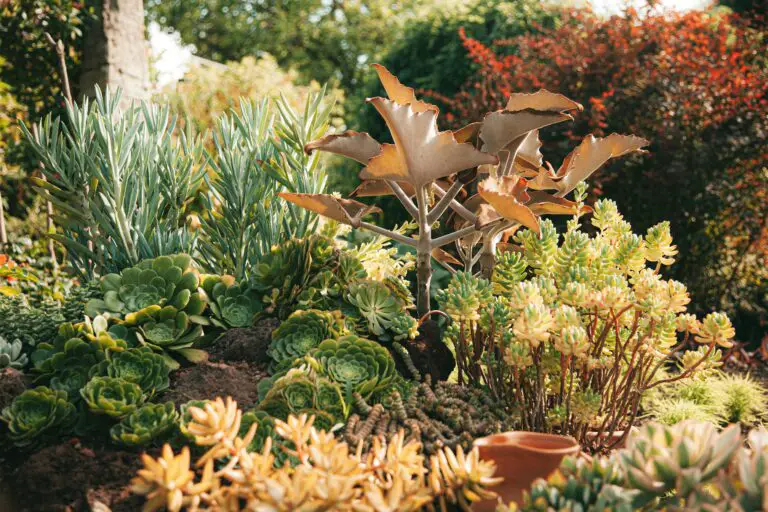
Preparation is key, and it all begins with the soil. Well-draining soil is imperative for sedum, as waterlogged roots during the cool early spring can spell disaster. Enrich your garden’s bed with a mixture of compost and coarse sand to give your sedums a luxurious bed to thrive in. Imagine tucking them in, snug and happy, braced to burst into a palette of life at winter’s end.
Watering may seem contradictory given sedum’s drought-tolerant reputation, but early spring is a unique time. A gentle, consistent moisture level helps the plants rehydrate after the winter dormancy and prepares them for the growing season. Think of it as a morning cup of water to quench your thirst – that’s all your sedum needs.
While sedum is generally low maintenance, don’t overlook early spring care. Removing dead foliage from the previous season can be cathartic for both you and the plant. It’s akin to shedding winter coats and feeling the refreshing spring breeze. This not only tidies up your garden but also prevents potential disease and pest infestation.
It’s also prime time to observe and possibly divide overcrowded sedum clusters. By doing so, you not only rejuvenate old plants but also propagate new ones – a sustainable way to expand your garden’s sedum portfolio. Remember that shared plant cuttings can serve as a gesture of neighbourly love, spreading the joy of gardening within your community.
Sedum’s growth timeline can feel like a tightly held secret, waiting for the perfect moment to unravel. By tailoring your soil preparation, watering habits, and plant care to the unique needs of early spring, you encourage a robust and lively garden. Watch enthusiastically as your sedum plants stretch out of their winter slumber, brave the last chills of spring, and leap into a season of unabashed growth and color.
Sedum’s Journey Through the Seasons: A Timeline of Vitality
At the turn of the year, in the crisp, frosty embrace of January, sedum sleeps beneath the soil, gathering the strength needed for its imminent reawakening. Gardeners often marvel at how these hardy perennials can withstand the cold, their roots like slumbering dragons waiting for the first signs of spring.
Spring Awakening: March to May
By the time March tiptoes in, with days gradually warming up, you’ll see the sedum begin to break through the soil’s surface. The magic starts with tiny green buds, a hint of the vibrant life to come. April showers bring about a rapid transformation, with leaves unfurling like sails catching the wind. It’s a month of verdant expansion, where the sedum starts to claim its space. As we roll into May, the sprightly growth of sedum is hard to ignore—lush, healthy foliage forms a dense carpet, prepping for the floral fanfare ahead.
Summer Splendor: June to August
June is when the sedum truly starts to strut its stuff—the greens are darker, fuller, and ready for the summer sun. By July, the fireworks begin. Sedum bursts into bloom, with clusters of star-shaped flowers in pinks, reds, or yellows, wowing anyone within view. It’s not just a visual treat; these blooms are a bee’s paradise. August sees the sedum at its zenith, proudly displaying its flower heads like a peacock fanning its tail—an enduring spectacle for any warm, sunlit garden.
The Autumnal Shift: September to November
With September’s arrival, the lushness wanes but beauty remains. It’s a painter’s palette of rust, gold, and burgundy as sedum flowers mature and foliage starts to transition. This natural shift adds a layer of warmth to the cooling landscape. October might bring a chill, but sedum holds fast, it’s stoic in the face of dipping temperatures. Even as November draws near and other plants wither, sedum stands tall, with seed heads providing texture and interest well into the dwindling daylight.
Now, take a moment to visualize these stages and see the sedum come to life right before your eyes.
Common Challenges During Sedum’s Growth Cycle
As spirited gardeners, we often find ourselves standing watch, eager for our sedum to unfurl its lush tapestry of textures and colors. But even the most robust sedum can stumble upon roadblocks during its break from dormancy. Let’s dive into the nitty-gritty of what can trip up our sedum and how we can be the green-thumbed guardians they need.
First up, the watering woes. Poor sedum can find itself swimming in excess moisture or parched for a drop. Remember, these are plants that revel in well-drained soils. Too much water? Roots may start succumbing to rot – a real party pooper! The key is to strike a balance; think of watering like seasoning your favorite dish – just enough, not too sparse, not too drenching.
Next, we waltz into the world of light – or the lack thereof. Sedum adores the spotlight, thriving in sunny locales. Tuck it in the shade, and you’ll notice it reaching and stretching – a ballet of sorts – for those cherished rays, compromising its compact charm. So do your sedum a solid; plant it where daylight can dance across its leaves.

Ah, but let’s not forget our ever-encroaching pests and plagues. Aphids and mealybugs can sneak in, drawn to the sedum like moths to a flame. These tiny gluttons can do a number on your sedum, turning it into an all-you-can-eat buffet. Regular inspections and organic interventions can save the day, ensuring your sedum stays as a sanctuary, not a snack.
And who could ignore the fickle frosts of spring? Just when your sedum starts to stir, a surprise chill can swoop in, leaving it bewildered and frostbitten. To shield your tender shoots, a layer of mulch or a well-timed cover can be your nightly knight in shining armor.
Each sprout is a story, each leaf a lesson. As we nurture our sedum, we learn the dance of adaptation, the art of attentiveness. With a dash of caution and a dollop of care, we can overcome these common quandaries, guiding our sedums from sprightly buds to full-fledged glory. So arm yourself with knowledge, for a thriving sedum is a victory not just for your garden, but for your green-thumb spirit.
Choosing the Right Sedum: A Guide to Varieties and Their Growth Patterns
As the days stretch and the chill in the air gives way to the warm embrace of spring, gardeners eagerly anticipate the moment when their sedum sanctuaries burst forth in a kaleidoscope of colors. But wait! Not all sedum varieties awaken from their winter slumber at the same time. To make the most of these succulent wonders, understanding the growth timelines of different sedum species is akin to choreographing a botanical ballet in your garden.
Imagine the early risers, like Sedum ‘Brilliant’, which welcome the spring with open arms, eager to flaunt their vibrant pink blooms. Then, picture the late bloomers such as Sedum spurium, fashionably tardy, yet no less splendid with their rich, ruby-red flowers adorning the garden like jewels in late summer. Each species has its unique rhythm, and getting to know them is the secret to designing a garden that thrives.
It’s more than just aesthetics; picking the sedum that suits your garden’s climate and soil can mean the difference between a flourishing bed and a faltering one. For the novice gardener in the cooler climes, Sedum spectabile—with its robust cold tolerance—would be a wise choice. On the other hand, for those basking under the sun’s relentless gaze, the drought-tolerant Sedum reflexum could be a lush oasis amidst the parched terrain.
And then there’s the story of the suburban dweller who took a chance on Sedum telephium ‘Autumn Joy’ and turned a drab, forgotten corner into a stunning, late-summer spectacle. Unlike its sun-thirsty cousins, this variety revels in partial shade, teaching us a precious lesson: that even under the dappled light of suburbia, sedum can thrive.
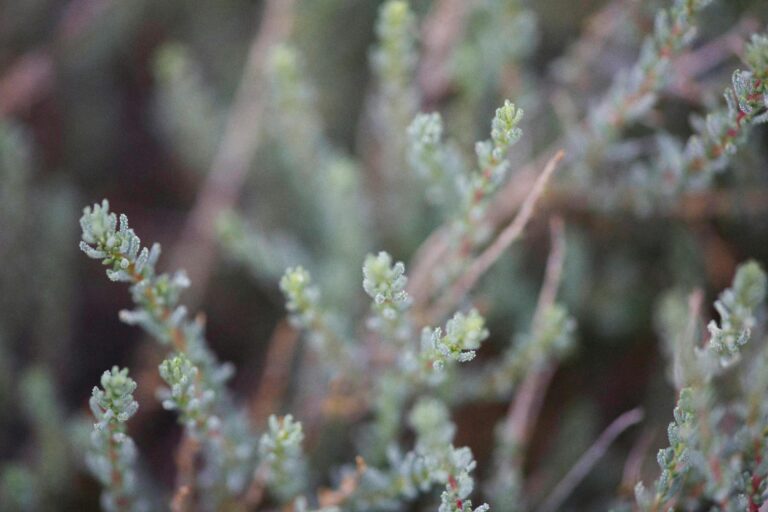
So, when you’re perusing the plant nursery or scrolling through seed catalogs, remember that each sedum variety is a character in your garden’s continuing story. Whether it’s the resilience of Sedum acre holding the fort or the delicate Sedum sieboldii weaving through autumn’s tapestry, each brings its essence to the earth’s canvas. Choose with care, grow with love, and watch as your sedum sets the stage for seasons of unforgettable growth.
Maximizing Sedum’s Potential: Best Practices for Planting and Maintenance
As the days lengthen and the frost begins to wane, the tenacious sedum, often known as ‘stonecrop,’ stirs from its winter slumber. This succulent family boasts a dynamic range of species that come to life in varying stages of spring. To enable the sedum to leap into growth with vigor, it’s essential to lay the groundwork with proper planting and committed care.
Planting Sedum: Laying the Foundations for Growth
The art of planting sedum begins with selecting an ideal spot that mimics their natural rocky habitats—think abundant sunlight and excellent drainage. Begin by incorporating generous amounts of organic matter mixed with gritty substances like perlite or coarse sand to create a loamy, well-draining soil that’s fertile yet not overly moist. Each plant should be spaced to allow for their growth habit; compact varieties require a snug 6 inches apart, while larger cultivars enjoy spreading out at a foot or more. Water them gently after planting to settle the soil and eliminate air pockets, but be cautious not to saturate—their roots detest lingering dampness.
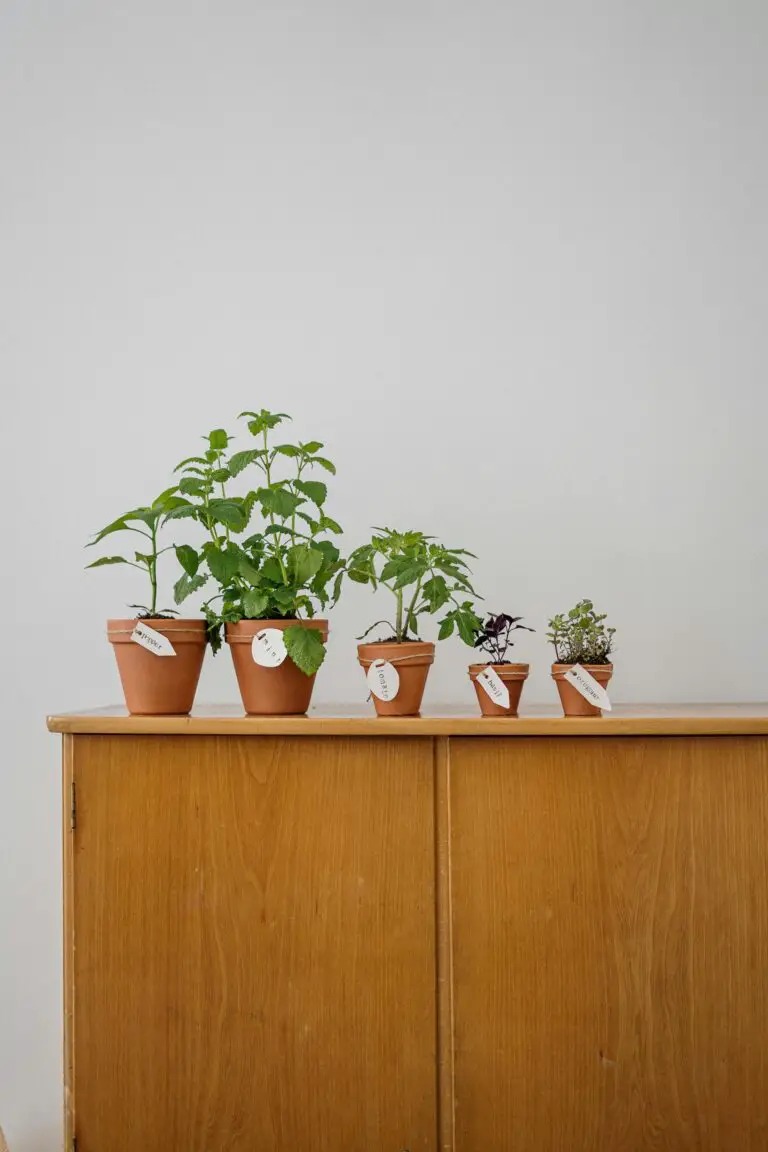
Nurturing Sedum Through Its Growth Cycle
Spring heralds the acceleration of sedum’s growth, unfolding a tapestry of foliage and, eventually, starry blooms. This period demands keen observation, looking out for signs that your sedum is thriving or needs a helping hand. A weekly watering schedule is a sound starting point, but always adjust your technique based on weather conditions; sedum can withstand dry spells better than most. Feeding your sedum a balanced, slow-release fertilizer as new shoots emerge encourages a robust display of foliage, while a boost of phosphorous prepares them for a stunning floral spectacle.
Ensuring a Thriving Garden Display
Fostering a resplendent sedum display goes beyond the essentials of water and nutrients. Guarding against pests such as aphids or the sedum weevil is critical; these uninvited guests can feast on young shoots and mar the plant’s aesthetic. Regular inspections coupled with organic pest control methods—like releasing ladybugs or applying neem oil—keep the invaders at bay. As sedum matures, some species may become leggy or overcrowded, necessitating mid-season pruning or division to rejuvenate and maintain their lush appearance. Remember, every snip or separating of clumps wards off stagnation and stimulates fresh, vigorous growth.
Embracing these best practices as your sedum emerges can lead to an enchanting garden performance that thrives through the growing season. Tap into the resilient spirit of these succulent wonders and prepare to be rewarded with a vibrant, textured garden that brims with life and color, proving that when given the right care, sedum’s potential is truly limitless.
Frequently Asked Questions
Embarking on the adventure of growing sedum, you’re bound to have queries sprouting up just as eagerly as these robust succulents do in the right season. So, let’s dive straight into the root of the matter and untangle some of the common conundrums gardeners face when coaxing their Sedum to succeed!
When does the magic happen – what time of year does sedum start to grow?
Imagine the morning sun peeking over the horizon; dew-kissed leaves begin to unfurl with the promise of spring. This very scene is when your sedum starts its growth spurt. As the frosty blanket recedes and the soil awakens, usually from late winter to early spring, keep your eyes peeled for fresh, verdant growth eagerly pushing through the soil. It’s a garden revue that re-enchants each year!
What are the tell-tale signs of sedum waking up?
As if stretching after a long winter’s nap, sedum embarks on its performance with tiny, green rosettes and elongated, determined shoots. If you observe closely, you’ll witness a platoon of tender stems standing at attention, ready to flank your garden beds with texture and color. And they aren’t shy about it; even the weariest winter eyes can spot the vivacity of sedum’s initial growth.
Are there any special markers that indicate my sedum is about to grow?
Avid gardeners might notice the sorcery beneath the surface even before visible signs appear. It often starts with a subtle swelling of the roots and base of the plant. If nature’s symphony is cued correctly with warmer temperatures and longer days, the sedum will soon follow the rhythm, bursting into life without missing a beat.
For those who are chomping at the bit for their sedum showcase, here’s a snapshot of what you’re yearning for:
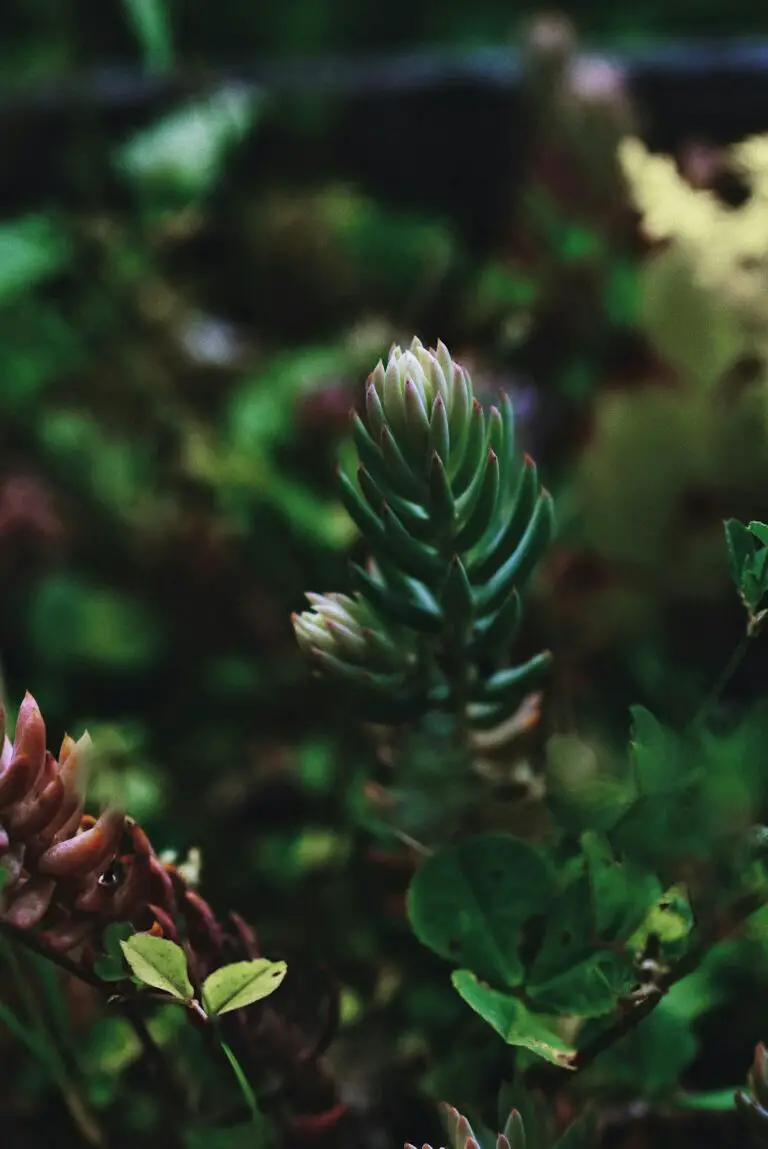
What if my sedum is a late bloomer?
Don’t fret! Just like people, plants have their own timeline. If your sedum is taking its sweet time, ensure it’s got the basics: adequate sunlight, well-draining soil, and a smidge of patience. Sometimes all it needs is a gentle nudge with a bit of water or a warmer spot to coax it from its slumber.
Does the variety of sedum affect the growing timeline?
Absolutely, and this is where the botanical ballet gets interesting. Different sedum species pirouette into prominence at distinct times and tempos. Some, like Sedum spurium, leap into the spotlight with early spring vigor. Others, such as Sedum telephium, prefer a summer sashay. Knowing your sedum’s varietal virtuosity can help you set the stage for a flourishing performance.
There you have it – a peek into the perennial puzzle of when sedum unfurls its leafy layers. Each sedum’s entry is as unique as the eruption of blooms that follows, choreographed by Mother Nature’s deft touch. So, keep your curiosity kindled, and your garden gloves at the ready; the spectacle of sedum growth is one act you won’t want to miss each growing season!



